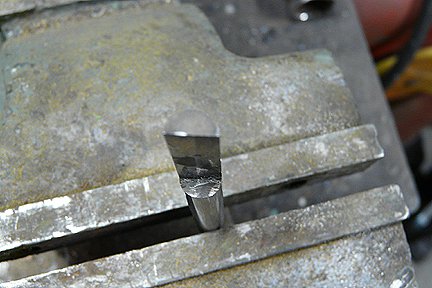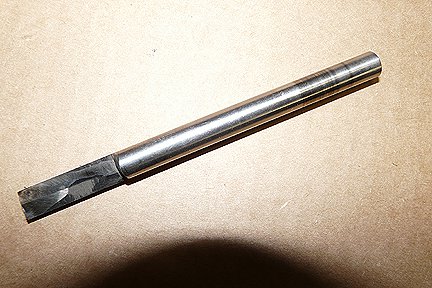-
Welcome back Guest! Did you know you can mentor other members here at H-M? If not, please check out our Relaunch of Hobby Machinist Mentoring Program!
You are using an out of date browser. It may not display this or other websites correctly.
You should upgrade or use an alternative browser.
You should upgrade or use an alternative browser.
Dowel Pins And Drill Blanks
- Thread starter roadkillbobb
- Start date
- Joined
- Apr 28, 2014
- Messages
- 3,590
Dowel Pins - Usually case-hardened alloy steel, many different types, styles and sizes available back in the day.
In tooling we used them extensively with drill bushings to precision locate fixtures. If one broke off it was relatively easy to extract since the core was soft.
---
Drill Blanks - As aerohawk mentioned, are made of HSS and hard through-out, usually 0 to -.0003" undersize.
---
Reamer Blanks - Same as Drill blanks except usually 0 to +.0002" oversize
---
All sorts of uses for Blanks, from gaging fixtures to cutting tools.
----
Drill rod is machinable steel that would need to be heat treated afterwards for durability.
_Dan
In tooling we used them extensively with drill bushings to precision locate fixtures. If one broke off it was relatively easy to extract since the core was soft.
---
Drill Blanks - As aerohawk mentioned, are made of HSS and hard through-out, usually 0 to -.0003" undersize.
---
Reamer Blanks - Same as Drill blanks except usually 0 to +.0002" oversize
---
All sorts of uses for Blanks, from gaging fixtures to cutting tools.
----
Drill rod is machinable steel that would need to be heat treated afterwards for durability.
_Dan
- Joined
- Dec 8, 2013
- Messages
- 2,651
Go to a tack shop and buy neatsfoot oil (not neatsfoot oil compound).An aside, if you had purchased O1, oil hardening, instead of W1, water hardening, the procedure is the same, but quench it in motor oil or something like that. Ideal Lard oil, but most of us don't have that handy.
- Joined
- Dec 27, 2014
- Messages
- 658
Thanks for replies, learning a lot here.
I'm thinking drill rod might also be used for pinning steel parts together?
If that were the case, after drilling thru the parts, I'm thinking widen the outside holes just a bit (sort of a small countersink). Heating the rod and then pounding to form a mushroom at both ends? I'm not sure how hot the drill rod should be though or even if heating is needed since you wouldn't want the rod expanded when it goes into the hole. Or maybe just press it in place? Curious what technique you use and for which projects.
You are talking about a rivet. You can use drill a bit like a rivet provided you are not expanding it much and you are not expecting it to be under much strain. Just clamp the parts together, and use a prick punch to expand the rod in the hole. You can add a small countersink. The rod should be flush or very slightly proud, and you can file it flush. Just a couple of sharp taps on the prick punch will be all you need. I would not expect the material to flare well if you tried to mushroom it over. This is purely to hold things together until they can be properly welded/bolted/etc.
normally you use softer metal for rivets. Old time iron workers used hot rivets to put buildings together. They would have a little forge, and a guy would toss a red hot rivet up to a guy on the steel, who would catch it and slip it into a hole and pound it over round.
- Joined
- Apr 5, 2011
- Messages
- 121
I use drill blanks to make D bits. When boring a hole with the lathe using a drill bit in the tail stock I go slightly undersized then finish it using a D bit if it needs to be true and accurate. The D bit will act as a boring bar and and give you a true hole to the full depth and even straighten out an off centre hole.
A "D" bit is made by grinding away very slightly over 1/2 of the drill blank on one side for about an inch or so leaving the end look like a D. Then grind a slight relief angle on the tip. When you start feeding it into the work it will act like a boring bar.
Nick
A "D" bit is made by grinding away very slightly over 1/2 of the drill blank on one side for about an inch or so leaving the end look like a D. Then grind a slight relief angle on the tip. When you start feeding it into the work it will act like a boring bar.
Nick



